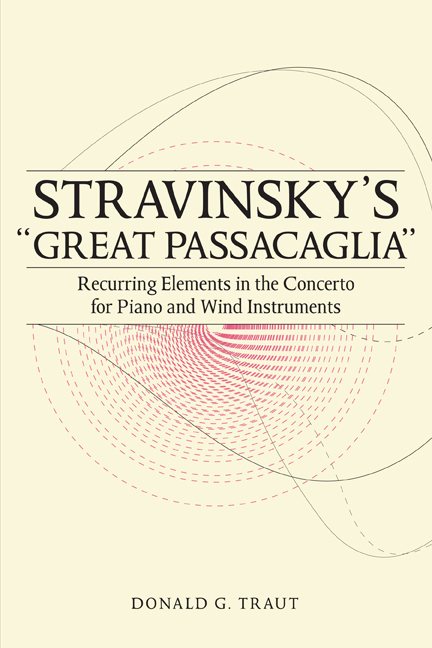Book contents
- Frontmatter
- Dedication
- Contents
- Acknowledgments
- Introduction
- 1 Context and Composition
- 2 Concerto as Catalyst
- 3 Analytical Tools and Recurring Elements
- 4 Counterpoint and Tonality in the First Movement
- 5 Tetrachords and Tritones in the Largo
- 6 Points of Imitation in the Finale
- Conclusion
- Appendix
- Notes
- Bibliography
- Index
1 - Context and Composition
Published online by Cambridge University Press: 12 August 2020
- Frontmatter
- Dedication
- Contents
- Acknowledgments
- Introduction
- 1 Context and Composition
- 2 Concerto as Catalyst
- 3 Analytical Tools and Recurring Elements
- 4 Counterpoint and Tonality in the First Movement
- 5 Tetrachords and Tritones in the Largo
- 6 Points of Imitation in the Finale
- Conclusion
- Appendix
- Notes
- Bibliography
- Index
Summary
Stravinsky had always intended to write a piano concerto. Since 1912, he had at least twice begun pieces for solo piano and ensemble, only to use the material for different ends. Then, in the summer of 1923, having recently completed his Octet and celebrated the successful premiere of Les Noces, he began work on yet another piece for piano and ensemble. Over the next nine months, he would work on, struggle with, and hastily finish his Concerto for Piano and Wind Instruments. This chapter provides historical context and traces the piece's compositional progress. By combining information gleaned from letters and sketches, a typical “beginning–middle–end” chronology emerges. Table 1.1 helps illustrate this by listing some important events that occurred around this time. It includes premieres, conducting engagements, relevant letters, and dates indicated in the Concerto sketch materials. I refer to these events throughout the chapter, which divides into three parts, mirroring the Concerto's compositional stages. In the first part, I describe some people and events that Stravinsky experienced as he began work on the piece. In “A Productive Winter,” I trace his progress toward completed drafts of both the first and second movements. Finally, I piece together how he completed the final movement, with the premiere looming and several other obligations to fill, in the spring of 1924.
Stravinsky in 1923
Prior to the Concerto, Stravinsky almost always had multiple composition projects simultaneously in motion. There was always a piece to be premiered, another in the final stages of composition, and yet another in the earliest stages. The early months of 1923 were no exception. He had several irons in the fire, all of which demanded his attention and influenced his compositional mind. Matters beyond his control—from financial to artistic—were having an impact as well. What is pertinent, however, are some of the challenges and opportunities that presented themselves during the months before he began to work on the Concerto. Patrons and Premieres
It is fair to speculate that Stravinsky may have felt some insecurity during 1921– 22. The challenges he faced as an artist during this time stemmed primarily from his stylistic turn toward neoclassicism. Concert audiences knew him as the rebellious composer of Firebird, Petrushka, and The Rite of Spring. They expected exciting scores, elaborate orchestrational devices, and even a sense of revolution.
- Type
- Chapter
- Information
- Stravinsky s "Great Passacaglia"Recurring Elements in the Concerto for Piano and Wind Instruments, pp. 5 - 31Publisher: Boydell & BrewerPrint publication year: 2016



